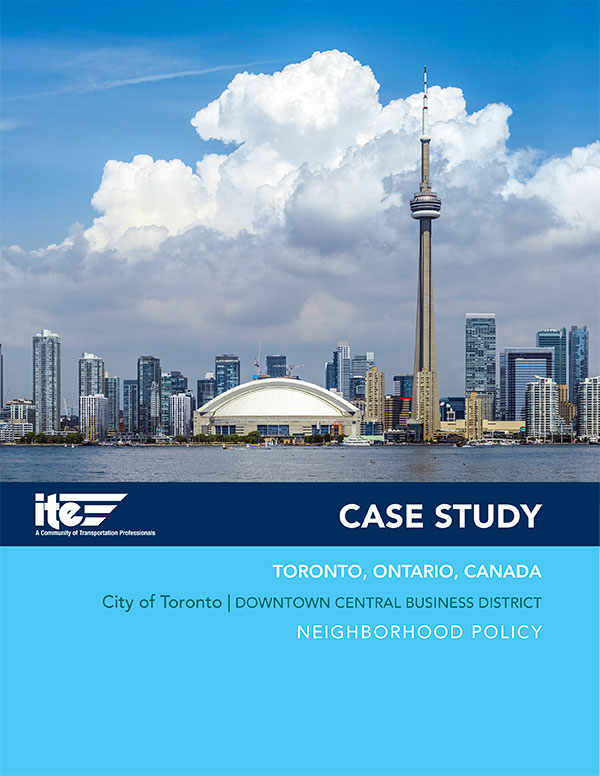Curbside Management
What is Curbside Management?
With the increasing concern for balancing the needs for all roadway users, and the growth of transportation network companies (TNCs) like Uber, Lyft, and many others, online shopping and associated freight deliveries, demand for curbside pickups and drop-offs, as well as transit, accessability, and vehicle storage demands are growing at the curb. Curbside Management seeks to inventory, optimize, allocate, and manage the curb space to maximize mobility, safety, and access for the wide variety of curb demands. Users of the curb include:

FHWA Curbside Inventory Report
The FHWA Curbside Inventory Report provides an in-depth technical study pertaining to the collection, inventories, and processing of information relevant to existing conditions, curbside activity, and performance measurement. The analysis provides the practitioner with the tools needed to establish modal priorities within a jurisdiction, paving the way for the pursuit of new projects and strategies. The report identifies appropriate measures of effectiveness to understand project needs, selecting appropriate data to evaluate the measures and project alternatives, and obtaining selected data. It includes a discussion of methodologies for collecting new data relevant to curbside management projects through both manual, in-person observations and automated data collection equipment.
Curbside Management Tool
The Curbside Management Tool is intended to help with curbside management, inventory, and allocation using quality curb asset data to temporally and spatially prioritize demand and allocation of the curb using ArcGIS Pro. The Tool should be used to build from existing curb inventory data to begin planning the prioritization of curbside uses and allocation. The Tool is built to be extensible regardless of jurisdiction size or area of interest for curbside management planning. The Tool is built upon the foundation of the ITE Curbside Management Practitioners Guide and the FHWA Curbside Inventory Report.
The Curbside Management Tool contains a suite of components that facilitate data collection, analysis, and treatment recommendations for curbside regulation and public right-of-way (ROW) allocation. With the help of the Curbside Management Tool User Guide, a transportation professional with GIS experience should be able to identify relevant treatment options to help agencies allocate curbs and public ROW in line with policy priorities. This Tool will allow transportation professionals to understand applications of curbside treatments, whether the organization has curb asset data, and established curb policies or not.
The tool is written in Arcpy and should be used in ArcGIS Pro version 2.4 or higher.
Assistance with Tool troubleshooting is not available.
User Guide
The Curbside Management Tool User Guide provides instructions, for transportation professionals with GIS experience, on how to gather, analyze, and assess curb related information, including applicable requirements, software, data, and experience level. The User Guide will walk through how to use all components of the Tool.
Treatment Priority Lookup Table
The Treatment Priority Lookup Table is an essential component which provides a user guidance to analyze with the ROW centerlines. It is available as a separate table both within the GitHub repository and on ITE’s Curbside webpage.
Sample Data and Project Worksheets
The sample data provided allows a user to become familiar with the Tool and the required data to run the Tool and receive outputs if they do not have their own curbside data available. The sample data folder includes a completed worksheet showing the outputs of the sample data set from Pittsburgh, PA, USA.
A completed worksheet has also been provided for a project in Vancouver, BC, Canada to run as a sample project to test the Tool.
ITE Curbside Management Practitioners Guide
The ITE Complete Streets Council developed the Curbside Management Practitioners Guide to provide jurisdictions information on how to inventory, assess, enhance, and prioritize curb space to meet the multimodal demands at the curb in a safe and efficient way. The Practitioners Guide addresses key gaps in existing curbside guidance:
- How to measure curbside performance
- How to identify and resolve trade-off considerations
- How to explain the value of curb uses to stakeholders
The Practitioners Guide considers regulatory, operations, and technology strategies to optimize curb access and usage, and features case studies for quick reference. It is based on a white paper by the National Association of City Transportation Officials (NACTO) titled Curb Appeal, case study and surveys of NACTO and ITE members, as well as presentations and workshops at key conferences in 2017 and 2018.


